What foods are actually "toxic" to pigs?We have all heard the horror stories, seen the panicked pig parents post, SOMEONE PLEASE HELP! My pig ate.... Toxic does not necessarily mean fatal. It usually refers to a substance which may cause a reaction in an individual pig (or person) ranging from a mild irritation to death. Let's be honest, if you do enough research about the foods you buy and eat for yourself as well as your pig, you will likely find something, somewhere saying there was exposure to a toxic substance, maybe a pesticide or component of the item, but nonetheless, now attached to being "toxic" when ingested. Guess what? Your pig may have eaten something that you thought was toxic, but it may not be "deadly". Assuming you will use common sense, pigs can eat pretty much whatever people eat, there are a few exceptions though. Milk, fish, meat in general aren't advisable to feed to pigs. There are a lot of foods that you should avoid for one reason or another, but high carb, high sugar, obviously high sodium foods should be avoided. What are the reasons that certain foods are considered toxic? Well, that is the reason for this blog...to get to the truth. Scientific evidence to support anything we add to the list. What SHOULDN'T be fed versus what CAN'T be fed are two entirely different topics. A food that isn't good for them is much different than a food that is toxic to pigs. What happens if your pig eats large amounts of one of the foods posted here on this blog? Your pig may not have any reaction or your pig could've eaten a small amount and had a massive reaction. We would suggest calling the Pet Poison Hotline or your veterinarian for instructions if there are ever any questions about what a pig has eaten and if there are any reactions to the food item. Apple and pear seeds and the inner stony pit (kernel) of apricots and peaches contain a naturally occurring substance called amygdalin which is a cyanogenic glycoside. Amygdalin can release hydrogen cyanide in the stomach causing discomfort or illness. It can sometimes be fatal. The age and size of your pig will impact the effectiveness of the seeds. It would likely take larges amounts of seeds to truly harm an older, bigger pig, but a lesser amount for a piglet or smaller framed/sized pig. A food fact that you may not know is that pesticides cling to the peel of an apple and can be absorbed into the flesh below, so be sure you always wash fruit before eating. It is always better to be safe than sorry, if you can, remove the seeds from these foods before feeding them. If your pig ingests one single seed, odds are your pig will be ok, but if your pig shows signs of distress after eating this, that is an emergency and should be treated as such. My pig is around 140lbs and almost 4 years old, she used to get an apple a day, a whole uncut apple, she has survived. However, as you read, you can see the seeds are toxic, but again, usually in large amounts. It would typically take a massive amount of seeds eaten over a short period of time to pose any health threat. If the seeds are swallowed whole, the risk of this toxin being absorbed is little to none, it is simply digested whole and excreted. If a pig is eating massive amounts of whole apples and chewing up the seeds, this is when there would be a potential problem. The same goes for most fruits with seeds unless otherwise noted on a specific food in this blog. Cassava Cassava contains a substance similar to amygdalin, like apple and pear seeds, that releases cyanide. Cultures that regularly eat cassava, know they need to cook it, or process it in other ways, to destroy the toxin. But sometimes there's more toxin than normal, or they don't cook it long enough, and people get sick or die. This makes it an inappropriate food for pigs as well. Wild mushrooms Commercially grown and sold mushrooms are safe. However, the Death Cap Mushroom as well as the false parasol are deadly, poisonous introduced fungus that is highly toxic when ingested. In Australia, it is responsible for 90% of deaths of related to mushroom consumption. The death cap is commonly found near established oak trees and possibly some other trees, usually during later summer to early winter after good rain or heavy irrigation. This particular mushroom is also found across the USA. One Mushroom contains enough poison to kill an adult. Cooking or peeling does not inactivate the toxin, and all parts are poisonous. Onset of symptoms occurs 6-24 hours or more after ingestion of mushrooms. Symptoms include violent stomach pains, nausea, vomiting and diarrhoea. Symptoms may subside for 1 to 2 days giving a false impression of recovery. However, by this stage the toxin will have already caused serious liver damage. Death from liver failure can occur many days after ingestion. A person who suspects that they may have eaten poisonous mushrooms should seek immediate medical attention, and where possible take a whole mushroom sample for identification. The sooner the treatment begins the better the chances of survival. Medical assistance should be sought at a vet hospital or emergency veterinarian or by calling your local Poison Control Center. For absolute safety avoid any wild mushrooms, unless definitely identified as non-poisonous. http://www.foodsafety.asn.au/resources/natural-toxins-in-food/ Potatoes All potatoes contain natural toxins called glycoalkaloids. Green parts of a potato aren't good for pigs or people to eat. The levels are usually low but higher levels are found in potato sprouts, and the peel of potatoes that taste bitter. The toxins are produced by the plant in response to stress such as from micro-organisms and UV light, and damage such as bruising. The amount of toxin depends on the type of potato and the growing conditions. Potato “eye” seeds are doused in pesticides to keep insects from eating the sprouts. Then, they’re sprayed with herbicides so no other plants grow near them. They’re basically exposed to chemicals every week for their entire growing season. Severe stomach ache and even death from glycoalkaloid poisoning has been reported overseas, but is very unusual. Glycoalkaloids are not destroyed by cooking, so it is important to avoid eating the sprouts and to remove any green or damaged parts before cooking. Do not eat cooked potatoes that still taste bitter. If you come across a green potato crisp, it’s probably best not to eat it. Remember to store potatoes in a dark, cool and dry place. Pigs do not know that the "green" part of the potato can be dangerous for them to eat, so do not put your pig in a position to get poisoned by not putting these types of foods where they can get to them. Keep foods like this in a bin or up high on countertops. Potatoes also contain solanine which destroys red blood cells and can cause diarrhea and heart failure. It is sometimes killed by cooking at high heats, however boiling won't reduce the solanine levels. Best to stay away from all parts of the white potato including the vines and leaves and skin. Leave are toxic and the skin contains trypsin which is an inhibitor to digesting proteins. Source: http://www.speakingtree.in http://www.fresheggsdaily.com Kidney beans or Lima beans (raw) Many types of beans contain toxins called lectins. The highest concentrations are found in kidney beans, especially red kidney beans, but also found in Lima beans. As few as four or five raw beans can cause severe stomach ache, vomiting and diarrhea. To destroy the toxins, soak the beans for at least five hours and then boil them briskly in fresh water for at least 10 minutes. Do not cook beans at a low temperature, for example in a slow cooker, as it may not destroy the toxin. Improperly cooked beans can be more toxic than raw ones. Rhubarb Rhubarb contains naturally occurring oxalic acid. The amount depends on the age of the plant, the season, the climate and the type of soil. Highest concentrations are in the leaves and these should not be eaten. The entire plant is toxic though. So avoiding this altogether would be best. Oxalic acid poisoning can cause muscle twitching, cramps, decreased breathing and heart action, vomiting, pain, headache, convulsions and coma. These are HIGHLY toxic to pigs. Vitamin A Poisoning Excess vitamin A either in the diet or by injection can cause pathological changes in the pig. If oil based injections to excess are given at weaning time high levels may interfere with the growth of the embryo and fetus. This is one of the many reasons why we suggest a pelleted diet whereas the manufacturer went to great lengths to ensure the mineral/vitamin mix was best for our pigs. If you choose not to feed a pelleted diet, but instead elect a natural diet, this delicate balance can be of concern. Always consult with a nutrition expert before attempting to transition to an all natural diet, they can tell you what foods are best and the amounts you need to have in order to have a good, nutritious, well-balanced diet for your pig. (Honestly, the same can be said of most vitamins/minerals. When given in excess, most have a negative effect of some kind) In older pigs exposure to more than 25,000 iu/kg in the feed causes growth plate changes. Clinical signs
Diagnosis A history of feeding high levels of vitamin A to both sows and growing pigs and shortened bent legs in piglets and weaned pigs would suggest poisoning. Treatment The changes in the bones are irreversible. Reduce the vitamin A levels in the diet. To put it in perspective for you, here is a chart for humans with appropriate amounts of Vitamin A based on age and gender. 25000 iu/kg is a massive amount. Currently, vitamin A is listed on food and supplement labels in international units (IUs) even though nutrition scientists rarely use this measure. Conversion rates between mcg RAE and IU are as follows:
An RAE cannot be directly converted into an IU without knowing the source(s) of vitamin A. Concentrations of preformed vitamin A are highest in liver and fish oils. Other sources of preformed vitamin A are milk and eggs, which also include some provitamin A. Most dietary provitamin A comes from leafy green vegetables, orange and yellow vegetables, tomato products, fruits, and some vegetable oils. The top food sources of vitamin A in the U.S. diet include dairy products, liver, fish, and fortified cereals; the top sources of provitamin A include carrots, broccoli, cantaloupe, and squash. If you feed your pig a pelleted feed and add vegetables, the amount you are feeding will likely not exceed the maximum allowed amount to be considered "toxic". Just know that pigs will specific genetic issues or diseases involving the liver may be at a higher risk for this vitamin to build up to a toxic level causing the defects mentioned above or worsen the liver function to live failure. Sources: http://www.thepigsite.com/vitamin-a-poisoning https://ods.od.nih.gov/factsheets/VitaminA-HealthProfessional Sweet Potato and Kumara Sweet potato shows trypsin inhibitor activity. That means it contains an enzyme inhibitor that blocks the action of trypsin, an enzyme that digests proteins. The trypsin inhibitor prevents the digestion of protein. Sweet potatoes with higher protein levels have more of the trypsin inhibitor. This makes raw sweet potato difficult to digest. The trypsin inhibitor is deactivated by cooking. One way the raw food diet helps people is by supplying food enzymes. Food enzymes do part of the work of digesting the raw food. Enzyme inhibitors increase the amount of work that your body needs to do to digest foods. Enzyme inhibitors force your body to produce more digestive enzymes. This uses up resources that could be used to produce detoxifying enzymes. When animals are regularly fed enzyme inhibitors in research, they become sick. Sweet potato should not be eaten raw. Kumara is from the sweet potato family- Fungi, bacteria, viruses, nematodes and phytoplasma are known to attack sweet potato. Pathogenic bacteria, although not very common, are responsible for important economic losses. They affect vascular tissue as well as storage and fibrous roots, thus causing vine wilting and rots. Fungal pathogens are classified according to the type of disease they cause, such as foliar, stem, storage root and post harvest diseases. Even though the specific management practices have not been developed for various sweet potato diseases since the crop is propagated through vine cuttings, most of the viral and fungal diseases could be avoided by selecting healthy planting materials and sanitation. In the present chapter, an attempt has been made to review the worldwide diseases of sweet potato and the available management practices. Source: http://vegpeace.org Parsnip Parsnips, celery, celery root, and parsley commonly contain a group of natural toxins known as furocoumarins. These are probably produced as a way of protecting the plant when it has been stressed. The concentration of the toxin is usually highest in the peel or surface layer of the plant or around any damaged areas. One of the furocoumarin toxins can cause stomach ache and may also cause a painful skin reaction when contact with the parsnip plant is combined with UV rays from sunlight. Psoralens can cause phytophotodermatitis. That means sensitivity to sunlight, caused by contact with a plant. Handling these plants & sunbathing can lead to bad sunburn, rashes, blisters, and skin discoloration. Photosensitivity from eating these vegetables can happen, but it's very unusual. It is important to peel the parsnip before cooking and remove any damaged parts. The levels of toxin drop when the parsnip is cooked by baking, microwaving or boiling. Discard any cooking water. While these foods may not be "toxic", they can lead to photosensitivity which can cause severe burns on pigs who eat large amounts. Source: http://vegpeace.org/rawfoodtoxins http://poisonousplants.ansci.cornell.edu/toxicagents Castor Bean The entire plant is toxic. The castor bean also includes a deadly toxin called ricin. When ricin enters the body it prevents the cells from producing the proteins they need. Without these specific proteins the cells cannot function and they die. If this cell death is wide spread enough it can lead to the organism dying. The toxin is released when the beans are chewed or crushed. If the beans are ingested it can lead to pain of the skin and eyes, profuse vomiting, diarrhea, severe dehydration, weakness, fever, myalgia, arthralgia, hallucinations, seizures, hematuria, hypotension, hypovolemic shock, multiply system organ failure and death!! It is said that three seeds contain enough ricin to kill a child and that 7 seeds can kill an adult. Source: http://bioweb.uwlax.edu/castorbeanfacts Tomato leaves and vine The major glycoalkaloid in the tomato plant is tomatine. (To put it simply, a glycoalkaloid is an alkaloid bonded with a sugar.) Tomatine exists in all green parts of the plant, including the stems, leaves, and green tomatoes. (For the sake of clarity, whenever I mention “green tomatoes” in this post, I’m referring to the immature, unripened green tomatoes — and not the varieties of naturally green tomatoes.) A study published in the Journal of Agricultural and Food Chemistry found that the highest concentrations of tomatine were found in senescent leaves, followed by the stems, fresh leaves, calyxes, green fruits, and finally, roots (which had the lowest concentrations). The difference in concentration between the fresh leaves and green fruits is negligible, so one isn’t necessarily “safer” to consume than the other. While tomatoes do show a decline in tomatine content as they mature and ripen, no one has ever thought twice about devouring a heaping of fried green tomatoes or pickled green tomatoes! Glycoalkaloids are also poorly absorbed by the gastrointestinal tract of mammals, and will pass through quickly to the urine or feces. In people who are sensitive to these compounds, stomach irritation may occur but they would have to ingest an unrealistic amount of green tomatoes or tomato leaves to experience ill effects. So what’s the deal? Are tomato leaves toxic or not? According to this food safety study (which compared the potential toxicity of glycoalkaloids found in tomatoes, potatoes, and eggplants), tomatine is a relatively benign glycoalkaloid. It resulted in no significant changes to liver weight or body weight when fed to mice, and is not considered adverse to human health. I would still be cautious about feeding these parts to your pig, it is not worth the risk. What’s most surprising is the discovery of tomatine as a cancer inhibitor. The glycoalkaloid has been found to effectively kill or suppress the growth of human breast, colon, liver, and stomach cancer cells. This study suggests that consumers could benefit from eating high-tomatine green tomatoes, and that there may be a “need” to develop high-tomatine red tomatoes as well (for the treatment of cancer and/or the study of tomatine as an anti-carcinogenic and anti-viral agent). Read more at http://www.gardenbetty.com/tomato-leaves-the-toxic Rape, Cabbage, Turnips, Broccoli, Kale, Cauliflower, Mustard (roots and seeds) (Brassica spp., Thlaspi spp. and Lepidium spp.) Key descriptive characteristics Collectively, the mustards have a pungent sulfurous odor. They tend to produce a basal rosette of leaves, and later produce alternate leaves along their stems. Most mustards have yellow flowers with four petals. Some of the common species in Missouri are wild mustard, field pennycress, tansy mustard, yellow rocket and Virginia pepperweed. Habitat Fields, waste ground, pastures, rocky glades and rights-of-way. Distribution Throughout the US. Poisonous part All parts of the brassica oleracea, especially seeds contain isoallyl thiocyanates, irritant oils, and under some conditions, nitrates. Roots and seeds from all of the derivatives (green leafy vegetables). Symptoms Oral and gastrointestinal irritation is most common leading to head shaking, salivating, colic, abdominal pain, vomiting and possibly diarrhea. Generally, for problems to occur, large quantities have to be consumed over a period of time. Source: http://extension.missouri.edu Other pet foods... Specifically dog food, cat food and chicken scratch. These pet foods contain a much higher amount of sodium and when combined with lack of fresh water, this can end in tragedy. Yes it is true some uneducated people feed their pigs only dog food, yes it is true these pigs have survived years like this, but no, it is not true that this is ok. It is NOT ok to feed pigs just any kind of food. The reason we suggest feeding pigs "mini pig specific" food is because this food was designed to provide pigs with all the essential nutrients and vitamins that a pig needs to build strong immunity, healthy bones and organs and allow them to thrive and grow at a nice steady pace. When fed correctly and given proper amounts of "extras" all balanced with their activity levels, your pig should lead a long and healthy life nutrition wise. When pigs are fed diets designed for other species of animals, they are not getting what pigs need in the way of nutrition, they're getting food that was created to keep a dog healthy or a cat healthy. As you know, a cat and a pig are 2 totally different animals and each one has their own nutritional needs. A pigs needs are NOT met using a type of food made for another species. There are extreme cases when a vet will "prescribe" wet dog food for a sick pig, but this is not the norm. This should only be fed as directed by your vet, if needed. Fava Beans Fava beans, Vicia faba, are a common human food in the Mediterranean regions of Europe. Their potential as a protein supplement for livestock is being explored in the U.S. and Canada. However, fava beans contain the glycosides vicine and covicine. These glycosides hamper the development of fava beans as a worldwide food and feed crop because they cause a disease called favism in people who have an inherited absence of the enzyme glucose-6-phosphate dehydrogenase (G6PD) in their red blood cells. In people who lack G6PD, divicine, the aglycone of vicine, and isouramil, the aglycone of covicine, cause acute hemolytic anemia either by direct action on the red cell membranes or by producing hydrogen peroxide which in turn breaks down red cell membranes. The incidence of this genetic deficiency is as high as 50% in some populations. So, again, better to be safe than sorry. With 1/2 chance of this causing these kinds of reactions in pigs, I prefer to steer clear of it. Source: http://poisonousplants.ansci.cornell.edu/toxicagents/vicine.html Lead Poisoning It is probably strange to see lead poisoning on this list...but there is a reason. This article provides information on lead poisioning in humans as well as domestic animal populations. Sections include sources of lead in houses and barns, environmental contaminationand some of its' causes, toxic levels in children and animals, symptoms of toxicity and links to related sites of information. With the relatively recent restrictions on the use of lead based paints, one of the largest sources of lead poisioning has been greatly reduced. These paints are still present in houses, garages, barns, on fences and furniture. The prevalence of lead in the world around us is still a significant health hazard, especially to certain "at risk" portions of human and animal populations. Although adults are susceptible to lead poisoning, children and newborns are most susceptible because of lower tolerance levels and the tendency to introduce foreign objects into the body. Sources In the Home
Although lead paint chips are still the most common source of acute lead poisoning, candy wrappers and food packaging are of particular concern because they are in direct contact with immediately consumed items. It is important to keep these items from being consumed, chewed or licked. We know pigs will eat paper or wrapper, so you will need to take special precautions with regard to your pig having access to certain items that have known lead particles. Environmental Contamination
Toxic Levels In Animals
Symptoms of Toxicity The general symptoms of lead poisoning are universal although more informaton is available on poisoning in humans. The first symptoms of lead toxicity are very general and nonspecific. These include nausea, sluggishness, vomiting, painful gastrointestinal irritation, diarrhea, loss of appetite, colic, weakness and dehydration. These symptoms are common to many disorders and can often lead to inaccurate diagnosis. Some symptoms more specific to human poisoning include discoloration of the lips and skin attributed mild secondary anemia, a lead line on the gums, developmental disorders, sterility and abortion. There have also been some prelimiunary reports indicating that chronic lead poisoning can also lead to chronic nephritis and premature development of arteriosclerosis. As you can see, it isn't often that pigs are effected by this, but definitely something to consider and keep in mind. More severe cases of poisoning can produce symptoms including convulsions,"wrist drop" or external limb paralysis, coma and ultimately death. Source: http://poisonousplants.ansci.cornell.edu/toxicagents/lead http://health.mcleancountyil.gov Flax/Linseed Immature plants have higher cyanide levels than mature plants or ripe seeds. Linseed cake should not be fed in large amounts to hungry animals. Large amounts fed for a long time can build up cyanide over time. LARGE amounts, typically this is hungry pigs with unlimited access to areas where this is grown, not adding a teaspoon a day to your pigs feed. If you are feeding small amounts daily, this is NOT going to pose any health problems. Source: .poison_plants.pdf Avocado Is it the avocado leaves, the pit or the skin that was toxic? Or is it toxic at all? This much is true: Parts of an avocado contain an oil-soluble toxin called persin. Specifically, the fruit’s seed, bark and leaves are composed of this toxic, fatty acid derivative. “Dogs and cats don’t seem to be affected by persin,” explains Lee. “However, birds and large animals (such as horses, pigs and cattle) have issues with persin toxicity, as it can be deadly in these species. “The bigger risk to some animals is the foreign body obstruction that can occur when the avocado seed is ingested—it’s a large seed and can get stuck in the esophagus, stomach or intestinal tract.” Source: http://www.petinsurance.com/healthzone/Avocados-and-Pets Oak Leaves And Acorns Whilst ruminants are more susceptible to acorn poisoning, outdoor pigs may be affected occasionally. Young oak leaves or green acorns are the major sources and signs are seen two to three days after ingestion. These include abdominal pain and constipation followed by haemorrhagic diarrhea. The kidneys may also be affected. I had a pig that was diagnosed with acorn toxicity. His urine was brown in color and according to the blood tests, the liver enzymes were elevated. He was removed from the acorn source and when his urine was clear again (about 2 weeks after the acorns were removed), the blood was drawn again and lab results revealed a downward trend and was on the way to returning back to normal. It's a lot easier to simply pick up the acorns than nurse a sick pig back to health. Some say acorns are not toxic to pigs, I disagree. The toxins in oak are called gallotoxins and are converted in the body to tannic acid, gallic acid and pyrogallol, all of which are very toxic to the kidney. It is the resulting kidney failure that causes the clinical signs. Typically, a significant amount of oak needs to be consumed over a period of time before clinical signs appear. Signs can develop over 2 to 14 days, or signs may be present with the animals becoming progressively worse over many weeks. Source: http://www.thepigsite.com You can click here to read more about this on our website. Nuts NEVER feed pigs any nuts in a shell with the exception of unsalted peanuts. That is the only acceptable type of nut that should be fed still in a shell. ALL other nuts in a shell can be dangerous because these shells are hard and can tear any part of the GI tract as they're chewed up and swallowed. Raw Almonds- Almonds are actually the seed of a fruit from the almond tree. Much like other fruits, this fruit has a seed that contains cyanide which when eaten in large quantities, can build up to a toxic level and cause problems. Store bought almonds have been heat treated and do not post a threat. This is raw almonds that can pose a health problem. Raw Cashews- The true fruit of the cashew tree is a kidney or boxing-glove shaped drupe that grows at the end of the cashew apple. The drupe develops first on the tree, and then the pedicel expands to become the cashew apple. Within the true fruit is a single seed, which is often considered a nut, in the culinary sense. The seed is surrounded by a double shell containing an allergenic phenolic resin, anacardic acid, a potent skin irritant chemically related to the better-known allergenic oil urushiol which is also a toxin found in the related poison ivy. Properly roasting cashews destroys the toxin, but it must be done outdoors as the smoke (not unlike that from burning poison ivy) contains urushiol droplets which can cause severe, sometimes life-threatening, reactions by irritating the lungs. The store bought versions of these nuts are NOT dangerous to the health and they've been treated through the heating process that destroys the toxin. However, if you choose to add nuts into your pigs diet, you will need to be sure they're unsalted and not in a shell. Source: healthyeating.sfgate.com Elderberries In 1983, there was a report in California that several people became acutely ill after drinking juice served at a religious event. It all stemmed from elderberry poisoning. For this specific occurrence, bunches of berries were crushed with their leaves and branches in a stainless-steel press and left overnight for the following day. The editorial note written in the same CDC warning. "The berries are juicy and edible when mature. The cooked berries are commonly eaten in pies and jams, and berry juice can be fermented into wine. The fresh leaves, flowers, bark, young buds, and roots contain a bitter alkaloid and also a glucoside that, under certain conditions, can produce hydrocyanic acid. The amount of acid produced is usually greatest in young leaves. There may be other toxic constituents in this plant. The root is probably the most poisonous and may be responsible for occasional pig deaths; cattle and sheep have died after eating leaves and young shoots." Source: http://www.cdc.gov/elderberry Moldy foods of any kind The term mycotoxin means “poison from a fungi.” Only about 60 of the 200,000 known species of molds have been shown to harm humans or livestock. These fungi grow on virtually all of the small grains, including wheat, oats, barley and, of course, corn, the main source of pig feed. Grains such as corn, wheat, and barley may be easily contaminated with molds. Mycotoxicosis refers to poisoning due to the ingestion of mycotoxins. This condition can cause lower resistance to diseases, increased sensitivity to stress, and damage to vital organs, such as the liver and kidney. Ultimately, this may lead to mortalities and poor production performance. Moldy or damaged grain You can feed livestock moldy or damaged grain that is not acceptable for human food. Evaluate these feeds on a case-by-case basis, following some general guidelines:
Sources: http://nationalhogfarmer.com/nutrition-mycotoxin-producing-mold http://extension.missouri.edu https://www.aasv.org/shap/issues Nutmeg In the small amounts needed for seasoning food, you can safely add nutmeg to dishes and drinks, but unpleasant side effects occur if you eat just 1 tbsp. of the ground nut powder on an empty stomach, according to the Utah Poison Control Center. Nutmeg poisoning became more common from the 1960s onward as drug enthusiasts sought cheap legal hallucinogenics. From 1 to 3 tbsp. of nutmeg powder, or 1 to 3 whole nutmeg seeds, causes illness in most people.The drug's effects begin 2 to 6 hours after ingestion, and the delay causes some users to take an extra dose. Source: http://www.livestrong.com/high-dosages-of-nutmeg Raw Bread Dough: Raw bread dough made with yeast poses mechanical and biochemical hazards when ingested, including gastric distention, metabolic acidosis, and CNS depression. Although any species is susceptible, dogs are most commonly involved because of their indiscriminate eating habits. We all know pigs will also not discriminate foods and will sample them equally. With recent ingestions in asymptomatic animals, emesis may be attempted, although the glutinous nature of bread dough may make removal via emesis difficult. In animals in which emesis (whether induced or spontaneous) has been unsuccessful, gastric lavage may be attempted. Cold water introduced into the stomach may slow the rate of yeast fermentation and aid in dough removal. In rare cases, surgical removal of the dough mass may be required. Animals presenting with signs of alcohol toxicosis should be stabilized and any life-threatening conditions corrected before attempts to remove the dough are made. Source: http://www.merckvetmanual.com/mvm/toxicology/bread_dough Foods that shouldn't be fed to pigs. Some of these foods have been labeled "toxic" to pigs, but are not truly "toxic". Here are the reasons why they should not be fed to pigs. Onions: It has been said that onions shouldn't be fed to pigs due to possibly tainting the meat of a pig due to be slaughtered, since potbelly pigs aren't used as a food source, onions aren't truly toxic to them. For other species, like horses, goats/sheep, cattle, cats and dogs, we can see ingestion of large volumes of onion (ALLIUM sp.) can be toxic. In these species, onions can induce a hemolytic anemia. And this can give us signs of anorexia, lethargy, GI upset (vomiting/diarrhea), elevated heart rates, respiratory difficulties bluish gums and collapse. For pigs specifically? Possibly GI upset and maybe gas. Chocolate: Chocolate is NOT toxic to pigs as it is to dogs. Pigs can process the theobromine in chocolate since their GI system is much like a humans'. So although we do not encourage feeding your pig sugary foods or stimulants, chocolate will not hurt them if eaten accidentally. Salt: Salt in itself is not toxic to pigs. Pigs need a certain amount of sodium in the body for normal function.It is the after effect and water deprivation that causes the reaction. When pigs eat sodium rich foods and there is no fresh water available, once it is offered or available, pigs tend to drink too much causing a systemic reaction leading to parts of the brain swelling and causing neurological problems. When hydrated properly, or having fresh water available, typically pigs do not have any issue. It is discouraged to purposely give pigs foods high in sodium just to be on the safe side though. Click here to read more about salt toxicity/water deprivation. Bones of any kind: Bones can splinter and cause lacerations anywhere in the GI tract. Cooked or not, bones should never be fed to your pig. Meat and meat products: In some countries, it is illegal to feed meat to pigs. These types of food are linked to diseases such as foot and mouth (FMD). Granted this is more of a problem in production pigs, miniature pigs could also contract these diseases. The last outbreak of FMD was 1929. Here is the quote "The US saw its latest FMD outbreak in Montebello, California in 1929. This outbreak originated in hogs that had eaten infected meat scraps from a tourist steamship that had stocked meat in Argentina....". Fatty foods: Fatty foods can cause pancreatitis. This study done using pigs fed a low protein diet showed there were effects on the liver. Had the study continued, I am certain some degree of liver insufficiency or failure would have been identified. Source: http://www.ncbi.nlm.nih.gov/pancreatitis Artifical sweetners: While these are not considered to be "toxic", you should limit the amount of artifical sweeteners you feed your pig for a number of reasons. Known facts about artificial sweeteners. Just because it’s on the shelf does not mean it’s been studied or should be presumed to be non-toxic. We know that sugar is toxic, but what about the popular sugar alternative, Splenda? Turns out it was FDA approved based on 110 studies, two of which were in humans, with one of those two only spanning four days and being run by the manufacturer. When we don’t objectively assess safety (including placebo-controlled, medium, and long-term trials), consumers become the subjects. Here are the results of a recent reportcondemning this toxin:
Source: http://articles.mercola.com/absurd-new-ways-splenda-is-deceiving-you Chewing gum: Aspartame in gum is absorbed by the buccal mucosa of the mouth, gums, and the tongue. According to research, because aspartame is absorbed this way, it makes aspartame a far worse poisoning than if given or injected intravenously. The aspartame goes directly into the brain by passing the spinal cord and the blood-brain barrier when it is absorbed in the mouth. The smallest amount of aspartame (like what is contained in a piece of gum) is very dangerous and damaging to the health of the body. When aspartame is ingested into the digestive tract, it breaks down into numerous other poisons. The intact Aspartame molecule and its diketopiperazine form are vastly worse poisonings than any of the other poisonings which arise from it during digestion, and liver processing of the digestive blood, which is delivered directly to the liver via the portal vein. The other poisonings, as mentioned, are indeed horrendous but Aspartame from gum is far worse, making even the smaller amounts contained in chewing gum strikingly dangerous and damaging. Aspartame, via ingestion into the digestive tract, is made into some ten other poisonings by the digestive processes, and then excepting that which is delivered directly to the pancreas, they are transported straight to the liver via the portal vein, where they then are very partially dealt with, and partially reprocessed. Afterwards, they are sent in somewhat lesser concentration to the entire body, lessening the amount which eventually goes to the brain. The amount getting to the brain from either source is devastating to it in many ways. Aspartame is most certainly devastatingly toxic when ingested, but a like amount is immensely worse when obtained from chewing gum. If you'd like to avoid aspartame, please keep in mind that it's not only in chewing gum. It is a common ingredient in many packaged foods and beverages, particularly those that are marketed as being sugar-free or low in calories. Examples include sugar-free or low calorie:
Sugary foods: Sugary foods or high in sugar should be avoided for obvious reasons. Pigs aren't known for their ability to lose massive amounts of weight by exercise, they're known more for animals that gain weight super easy and hard to diet. Weight loss takes MONTHS. It is best not to put your pig in a position to gain massive amounts of weight because it is so hard for them to lose it. Caffeinated items: Caffine is a stimulant. However, it appears like caffeine given to pigs affects reproductive ability and also triggers PSS (porcine stress syndrome) in pigs who are susceptible to that genetic disorder. Read more about the effects of caffeine in this research study by clicking here. Source: http://onlinelibrary.wiley.com http://www.ncbi.nlm.nih.gov/pubmed/ To read more about what these foods can do, you can read more by clicking these links below:
Coffee and the effects on pigs: http://www.scielo.br/scielo.phpcaffine http://poisonousplants.ansci.cornell.edu/toxicagents/index.html http://poisonousplants.ansci.cornell.edu/toxicagents/steroid.html
139 Comments
6/28/2016 06:28:23 am
Whats a good treat for training...and is granola ok...
Reply
Mini Pig Info
6/28/2016 06:53:36 am
Cheerios are a common treat for training as well as grapes. unsalted air popped popcorn is another great training treat :)
Reply
Higgins+Evander
1/11/2017 11:48:53 pm
Hi, my pig won't eat and lies down all the time, we called the vet and he told us to keep him inside, but he isn't getting better and we don't know why. What should we do? We think he can't digest something, should we give him coffee?
Mini Pig Info
1/12/2017 06:58:34 am
Higgins & Evander,
Wilbert mom
12/15/2017 12:18:21 am
My mini pig won't eat the pig feed I buy it tried different kinds but he only wants cat or dog food is that OK for him to eat
Reply
wendy alderman
1/5/2018 02:08:43 pm
No, dogfood has too much sodium and will cause toxicity. Try adding water to the food and adding 1-2 teaspoons of peanut butter or plain yougurt and mixing around.
Brandie
2/2/2018 05:42:39 pm
Dog food is NOT ok for pigs!!!
Kali
11/25/2018 11:14:18 pm
My pig had seizures From dog food and almost died 😞
Jena
4/18/2018 01:58:46 pm
Yes granola is fine
Reply
Mini Pig Info
6/29/2016 10:09:04 pm
Thank you so very much!! we really try to create things that are useable by other piggy parents <3
Reply
Higgins+Evander
1/11/2017 11:43:54 pm
Susan McAdams
4/19/2017 03:46:37 pm
Hey, can I feet my potbelly uncooked rice? She really loves it but I just want to be sure
Jody
8/22/2016 01:00:24 pm
Thank you for your very accurate and informative and collectively broad coverage of safe foods for my Bacon
Reply
5/1/2017 09:33:46 pm
What can I feed my 8 week old mini pig as we want to bottle break him and feed him solid foods.
Reply
Michael Shain
6/18/2017 05:04:50 pm
Hi Sharon,
Leland peffley
11/28/2016 12:20:26 am
How about gooseberries and beauty berries? Are they safe for pigs?
Reply
Leland peffley
11/28/2016 12:24:33 am
Also paw paws are ok? Im trying to fence in a few fruit and berry plants in our large pasture but do not want anything that could hurt pigs. We have one potbelly who's a pet but eventually I'd like more than one.
Reply
Mini Pig Info
11/28/2016 10:55:58 am
I haven't heard anything about that particular plant, but if you give me a little bit, I will research to be sure they're ok.
Mini Pig Info
12/10/2016 08:35:36 am
sorry for the delay in responding. I haven't been able to find information on those particular plants, but did want to send the link we have that lists toxic plants. http://www.minipiginfo.com/toxic-plants.html.
Debbie
12/3/2016 10:58:21 am
Sometimes I run out of fresh veggies and fruit. Is it okay to feed can or frozen veggies, i.e. Can corn or frozen fruit or veggies?
Reply
Mini Pig Info
12/3/2016 11:59:53 am
Yes, those veggies are fine, but pay close attention to the sodium content. Canned veggies are known to be high in sodium.
Reply
Danielle Carter
12/5/2016 11:34:48 am
Does rinsing canned vegetables remove sodium? Or is it already absorbed into the veggies?
Rayna
8/3/2017 10:14:00 pm
Frozen is fine, in fact frozen peas (depending on the pig) can be used as treats
Reply
Judie Angell
12/6/2016 03:31:17 am
Reply
Mini Pig Info
12/10/2016 08:31:24 am
Danielle, rinsing the veggies from a can will not remove the sodium they have absorbed. You can find salt free veggies though. Finally the companies realized that lots of people suffer from hypertension (high blood pressure) and doctors have restricted the amount of salt they're allowed to eat, so I have purchased the canned veggies that say no salt added and if you look at the sodium content on the back of the can, it should say 0 or >1%. ALWAYS make sure there is fresh water available as this is actually the reason why pigs suffer from water deprivation (which is often referred to as salt toxicity). When they eat a food that has a lot of salt in it and no water easily accessible, when fresh water is finally available, they tend to drink massive amounts and that overwhelms their body, more importantly causes swelling in the brain which leads to neurological issues. It is much easier to simply stay away from sodium rich foods, but if your pig should get into some, like dog food, for example, the key is to hydrate slowly. We have a whole page that discusses this. If this link doesn't work, go to our mini pig health section, scroll down to mini pig first aid and click on water deprivation/salt toxicity. http://www.minipiginfo.com/salt-toxicitywater-deprivation1.html
Reply
Aubrey
12/26/2016 02:04:55 pm
Can pigs eat mint leaves? We have some in our backyard and my pig loves them.
Reply
Mini pig info
1/7/2017 07:14:52 pm
I have never read anything that says mint leaves are toxic. Plus, your pig will have fresh breath ❤
Reply
Sara
1/1/2017 09:58:03 pm
Can mini pigs have sweet feed?
Reply
Mini pig info
1/7/2017 07:16:00 pm
Sweet feed can be given every once in a while, but not as the sole source of nutrition. Sweet feed isn't made for pigs and can be extremely fattening and also not provide the essential vitamins and nutrients that pigs need. :)
Reply
Kimberly
1/7/2017 05:25:31 pm
I think my pig might have just eaten some wild mushrooms, how will I know if it effects her or not??
Reply
Mini pig info
1/7/2017 07:17:39 pm
It really depends on what kind of mushroom it was. Some are harmless while others are quite harmful. Having said that, the effects from them ingesting something toxic would likely start a couple hours after eating such things. Depending on the amount your pig ate, the size of your pig and the type of mushroom, it may not effect her at all.
Reply
anderstarr
10/29/2017 07:25:14 pm
thats not necessarrily the case with mushrooms. There are mushrooms that may not effect you for a day or two and I remember reading about one that showed no signs of poisoning until a week or so had passed. Then after a week it killed you. So mushrooms can be a very different kind of poison, so best to really pay atention and remove those that grow anywhere your animals have access to
Jennifer Young
1/8/2017 08:24:40 pm
Are strawberries Ok?
Reply
Mini Pig Info
1/8/2017 08:59:33 pm
Yes. Strawberries are fine in moderation. Fruit should be given as a special treat. Most fruits are full of natural sugars. We do have a section on the website under pig health, then nutrition with a page dedicated to pig approved fruits and veggies :)
Reply
Non supporter of this crap
1/11/2017 09:46:39 am
My god. According to this site we should feed swine feed and swine feed only. We raise pasture pigs, free range so to speak and they have access to tons of acorns. We have raised hogs this way for years and never saw any effects from eating acorns and lots of other stuff mentioned here. How about wild hogs (feral) who heavily depend on the acorn crop to survive? They seek out acorns as a food source. The most expensive pork ever sold was a Berkshire hog finished out on nothing but acorns.
Reply
Belseth
10/18/2017 01:02:17 am
Yeah, that was my reaction. Yes green acorns would be bad in large quantities but few actually hit the ground. Acorn finished pigs are considered among the best in the world, chestnut finished is slightly better. Never feeding them nuts in the shell was also ridiculous. They're called orchard pigs which are fed apples and nuts off the ground, they also warned you not to let pigs eat apple seeds. Pigs don't tend to eat walnuts in the shell because the outer hull is so bitter but if you remove that they will happily crunch away at walnuts. Butternuts and hickory nuts they'll eat as fast as they hit the ground. If you free range a pig you'd have your hands full trying to keep them from eating all the stuff they say is dangerous for them. There are things like raw parsnips that are commonly known as bad for pigs but otherwise if it can't outrun them they'll likely eat it and that includes chickens. Not feeding them meat is also silly. I've seen a video of guinea hogs wolfing down dead roosters. I have heard with larger breeds over feeding them meat can make them more aggressive, no first hand knowledge there but as a treat there is no problem. As to fish I knew of some one that fed their pigs fish heads and guts which the pigs loved. Just as some mention stop feeding them fish a month before slaughter or you get fishy tasting pork. By the same token feeding them herbs and chestnuts the last month will add flavor and make the meat sweeter. Most animals know instinctively what to avoid. I haven't heard of much choking troubles with pigs, if it fits in their mouths they can swallow it but cows are really sensitive about size. Turnips and beets should be sliced but pigs will generally chew them to get the flavor before they swallow. Use common sense with bread and sweets. Breed type is a big factor. If you feed a lot of bread and sweets to a Kune Kune their feet may not be able to to touch the ground and you may have to roll them to the butchers. You will get a lot of lard out of the deal but the meat may be too fatty to eat. Just vary their diet and factor in what breed they are and if you are after meat or lard. Just roast or boil potatoes and what's with all the warnings about tomato leaves and vines? I've never seen an animal eat them in my life. The problem with turning your pigs loose in your tomato patch is you won't have any tomatoes left!
Reply
Non supporter
1/11/2017 09:56:31 am
My apologies to this site. We raise meat hogs and I was doing some further investigation on the benefits of wheat fodder for pigs and stumbled across this. I now see that this is a mini pig site. I know nothing about mini pigs and maybe this info is correct for them. But it's not the case for large meat hogs. Except for the obvious ones. Maybe if some of this was fed to heavily it would be a problem.
Reply
Mini pig info
1/11/2017 10:01:52 am
Yes, there is a big difference in raising pigs as pets. We focus on health and longevity. So the food we feed is absolutely critical to the well being of our pigs we have as pets. Thanks for clarifying your comment though :)
Reply
Not a supporter
1/11/2017 12:15:28 pm
Feel free to delete my comments. I really stuck my foot in my mouth that time. I took it a bunch of false information on meat pigs. Thanks for your understanding.
Reply
1/11/2017 05:38:52 pm
I am trying to find out if my mini pigs can have the peel/skin of butternut and spaghetti squash. Also how about the seeds of the butternut? Ive never offered the seeds or the peel. Just trying to find out. I hate peeling the butternut. Both my girls love the squash 🐷🐽
Reply
Mini pig info
1/11/2017 05:56:19 pm
Absolutely they can have both the peelings as well as the seeds inside. I've never peeled the veggies before giving them to my pig and actually feed the peelings when I am cooking the veggie for like a family dinner or holiday. Often times the peelings have the best source of vitamins :)
Reply
Melinda
1/12/2017 01:43:00 pm
Oh snap!! I thought I was doin good by feeding her fresh fruit n vegetables.. then I read this. Iam worried now! So wat is the name of the pellets I should ask for at the co-op?
Reply
Mini Pig Info
1/13/2017 10:51:00 pm
Fruits and veggies are fine in moderation. However, pigs need a specific balance of essential vitamins and nutrients in their diet. We have a page under pig health that says nutrition, if you go to that link, you will see the names of the top brands of feed. If you go further into the nutrition section, you will see a page regarding natural diets for pigs. That isn't something I personally recommend because most people who don't have a nutrition degree don't really know how to formulate an appropriate diet without using the pelleted feed. (And I don't mean that disrespectfully)
Reply
Grace
1/14/2017 11:17:53 pm
Hi! I was just wondering if Manuka honey is ok for my mini?
Reply
Mini Pig Info
1/21/2017 01:31:41 pm
Manuka honey should be fine. Pigs can pretty much eat anything humans can have. The key is moderation.
Reply
Hamilton23
1/15/2017 06:11:50 am
What does it mean if my mini pig is coughing and sneezing all the time ?
Reply
Mini pig info
1/21/2017 01:33:15 pm
It could be allergies or several other things. We do have a page that discusses reasons why your pig might be coughing, you can view that page by clicking the pig health header and then pig diseases/illnesses and near the bottom of that list is the page that discusses coughing and potential causes.
Reply
Niknak
1/21/2017 12:22:37 pm
My 6 month old pig ate about 5 sticks of peppermint cobalt 5 chewing gum. It does contain aspartame. Will he be okay??
Reply
Mini pig info
1/21/2017 01:34:35 pm
Yes, your pig should be fine. Pigs can pretty much eat anything that humans can eat since our digestive systems are very similar. A lot of what is toxic to other animals is NOT toxic to pigs. We do have a page on things that are toxic to pigs that you can find under the pig health header on the main website.
Reply
Noelle
2/20/2017 01:06:37 pm
Is it ok for my potbelly pig to ingest lime
Reply
Mini Pig Info
4/27/2017 11:11:51 pm
If you are referring to the life fruit, a small amount shouldn't hurt. Pigs can pretty much eat anything humans consume. Obviously fattening foods or empty calorie type foods should be given in moderation.
Reply
Vicki
2/23/2017 12:14:56 pm
What is the daily limit of sodium for potbellied pigs?
Reply
Mini pig info
4/27/2017 11:14:23 pm
There jabbing true limit, but I would limit sodium intake as much as possible. The salt, itself, is needed on the body for crucial functions of major organs such as the heart. The problem is water deprivation. When there is not a fresh water source available and then there is,
Reply
Patricia gibson
2/26/2017 02:41:31 pm
My mini pig has purple spots on his skin near his nose, lower tail area, ears, some on tummy but no fever he is eating still, i have read may sites any ideas..........help
Reply
Mini Pig Info
2/26/2017 03:36:19 pm
I wish there was a way to respond to yalls comments that we KNOW you're seeing the reply. I would most definitely call the vet if I saw purple spots on my pig. Email us though. [email protected]
Reply
Karla
2/27/2017 08:00:53 am
My mini pig ate some grease that was used to fry fish. Not sure how much she ate but it was probably a cup or two. This happened about 14 hrs ago. She didn't want her breakfast this morning.
Reply
Mini Pig Info
2/27/2017 08:57:15 am
Although grease was used to fry raw fish, I do not believe it would actually hurt your pig. It WILL likely cause massive diarrhea at some point. It may also cause a belly ache and after drinking possibly 2 cups of it, it's important that she get up and walking so she is able to poop it out. If she's not going potty or if there is a fever, I would most definitely call a vet. Make sure she stays hydrated as well. Mobility will help with the digestion process, so make her get up and move around.
Reply
Dave
2/27/2017 06:26:31 pm
Hi, we feed our 95+ lbs, year and a half old piggy 1/2 cup pellets twice daily plus at least one salad plus beans, grape tomatoes and cucumbers as snacks...we've noticed he's getting larger, is there better snacks for him???
Reply
Janel
3/23/2017 09:30:29 am
I have 3 pot belly babies - I feed my girls Mazuri mini pig feed along with lettuce, cukes, carrots and really any vege that makes a good salad. The feeding ratio is (split between the 3) 2 cups of food, normally 3 bags of salad along with the other vegs in the morning and the same at night. They do get some fruit. I also put corn in their pen for them to root around for. They are very healthy girls. I am not sure if this to much. As we know they will eat as long as they are being fed.
Reply
Mini pig info
4/27/2017 11:18:08 pm
I would rather you judge the diet based on body scores rather than the diet itself. Since each pig is different, with unique metabolism and activity levels, that diet may be ideal for YOUR pig but may cause excessive weight gain in another. Under the heading mini pig health. There is a nutrition link and then a subpage entitled what a health versus unhealthy pig looks like. Use the charts on that page to see if the diet needs to be adjusted/tweaked.
Reply
Amanda
3/30/2017 12:06:27 am
I'm getting a mini on Sunday, shes a rescue so she is a year old. I'm wondering if she can have just regular old mushrooms, or sweet peppers (red&yellow) or green peppers. We have these items in our house 99% of the time so I thought she could share a little if it wouldn't hurt her?
Reply
Mini Pig Info
3/30/2017 01:09:17 am
Pigs can eat pretty much anything people can eat (in moderation of course) but here is a list of foods that are pig approved. :) http://www.minipiginfo.com/pig-approved-fruits-and-veggies.html
Reply
Mini pig info
4/27/2017 11:19:47 pm
Pigs can prettt much eat foods eBay humans can eat, so though this is an educated guess, I wouldn't think that would hurt your pig.
Reply
Steph
7/2/2020 06:40:50 pm
Humans cannot eat raw olives that haven't been processed. Does that mean olives straight from trees would also cause problems for pigs? I temporarily put my pigs under some olives trees. They are consuming all of the olives. However, they seem to have bloated tummies. One has been trowing up olive paste and has a black secretion around her eyes. She is also not as active as she used to be.I thought her belly and lethargy were signs of being pregnant, but her belly is pretty balloon like. Should I be worried?
Candice
4/27/2017 07:42:29 pm
Hello! THANK. YOU. Thank you for this article! I am SO SICK of reading articles that are poorly written, and scare the complete bejesus out of you!
Reply
Mini pig info
4/27/2017 11:21:17 pm
Well thank you so much for the kind words. We try to make the website user friendly while still providing the information thats needed ❤️.
Reply
Btidget
4/27/2017 10:51:55 pm
Our Gladys has been grazing all day long since spring has arrived here in Canada. I have noticed her gaining weight very quickly. We usually feed her 3/4cups of mini pellets as well as salads and small pieces of fruit as treats occasionally. She was maintaining a healthy weight until she starting grazing. Should we cut down on pellets, is she getting proper nutrition from just grass and roots?
Reply
Mini Pig Info
4/27/2017 11:23:17 pm
I have heard of people who do cut back the feed substantially, grass and other plant based things pigs eat should help keep them feeling fuller longer. So it wouldn't hurt to cut back on veggies when there is excessive grazing going on. :)
Reply
Barbara brown
4/28/2017 11:14:37 am
Can you feed bread to pot Belle pigs my hubby is giving it to them
Reply
Cassandra
6/5/2017 09:20:57 am
So our pot belly is housed with our 2 goats we have free choice baking soda and goat mineral for the goats should I be worried about the pig getting into it? Are they toxic to pigs?
Reply
Mini Pig Info
6/5/2017 03:56:29 pm
Honestly, ANYTHING eaten excessively has the potential to be bad. Since this is more of a vitamin supplement type of thing, I would try to keep it in an area where your pig(s) have limited access. If they eat too much vitamins/supplements, yes, it can be toxic to them. and let's face it, they're pigs, they will eat excessive amounts.
Reply
Mini pig info
7/4/2017 10:41:10 am
Pigs can pretty much eat anything humans can eat. So I wouldn't feed my pig anything that I wouldn't eat, otherwise; with the exception of the things listed here (foodwise) you should be ok. Moderation is key.
Reply
Wayne
6/13/2017 01:41:54 am
I have heard that citrus fruits should not be given to Pigs. Is this accurate?
Reply
Mini pig info
7/4/2017 10:41:58 am
Pigs are prone to gastric ulcers, so citrus foods should be kept at a minimum. But an orange slice every once in a while won't hurt.
Reply
Dort Rothafel
7/4/2017 08:49:25 am
Is ok to give my pig insects? He just ate a big grasshopper and seemed to really enjoy it. What about cockroaches? I have a 2 month old mini pig named Grunter, he came from house pig parents as opposed to being farm raised.
Reply
Mini pig info
7/4/2017 10:43:15 am
Pigs are NOT vegetarians as many believe they are. Insects are a natural part of their diet, as gross as that is. Many pigs will dig for grub worms and other bugs/worms. Just be sure you are proactively treating for parasites every 6 months or routinely.
Reply
Sarah
7/22/2017 08:51:31 am
Thanks for the great info. I know plum pits are toxic due to cyanide but one of the lists also includes plum leaves. Can you verify whether or not plum leaves are toxic and the level of toxicity, ie vomiting, diarrhea, death...thanks!
Reply
Sam
8/22/2017 02:10:59 am
Hi, i have been feeding my pigs raw chicken meat from a catering company. Only being a couple of days old before its fed to the pigs. Is this a good idea? How will i know if the pogs have been affected by this or is there a cure?
Reply
Mini pig info
8/22/2017 07:23:07 am
Pigs should not eat anything a person wouldn't eat. Raw chicken shouldn't be fed to anyone, there is a risk for samanella poisoning each time.
Reply
Lynn
8/24/2017 12:06:25 pm
My little guy loves to run outside and eat acorns they're falling everywhere we happen to live by several acorn trees he does eat many and I'm worried I can't seem to keep him out of it and I obviously can't pick them all up any suggestions
Reply
Mini pig info
8/24/2017 01:23:05 pm
A few acorns here and there shouldn't be a problem. I have almost 20 acorn producing trees in my backyard and literally use a yard vacuum and/or shop vac to try and get rid of as many as possible 2-3 times a day. But him eating a few even daily shouldn't cause major issues, the problems arise when they eat massive amounts for long periods of time.
Reply
JDBell
2/2/2018 11:26:48 am
Acorns and other forest floor nuts like hickory and beech have been a prime forage source for free-range pigs for several centuries in the Eastern mountains of the United States. Homestead farmers ranged their hogs over miles and miles of the original hardwood forests there, fattening them on these sources. Of course they didn't feed them a drop of grower pellet, because, well, that didn't exist until the 1950s. Growers out here where I live still fatten hogs on tree nuts, including acorn and hazel nut to create the most delicious charcuterie. In Spain it's an ancient tradition, just look up Jamon Iberico de ballota. All the best!
Reply
Carol
10/7/2017 03:56:45 pm
Every couple of months my 10 year old pot bellied pig doesn't eat, and lays around for afew days to a week. I can only assume he ate something outside that didn't agree with him. I believe he had an ulcer at one point and it cleared up after a few days of an antacid. I sit with him, talk to him and pet him and he seems to feel better. I have always been strict with his diet.and have done much research on the forbidden foods.
Reply
New owner
12/24/2017 03:14:01 pm
Can I feed my new pig redid wip whipped cream?
Reply
Heather M Wood
12/24/2017 07:44:18 pm
My mini keeps snacking on here pine pellet litter. The people she was rescued from had her using kitty litter but I read kitty litter is unsafe.... what do i do.
Reply
Jaide
9/25/2021 12:40:46 am
I read up on this not long ago. So long as it isn't cedar, you should be good. Pugs will eat literally anything. You could opt for straw instead. It's a great food source and can be used to potty in.
Reply
New owner
12/29/2017 04:33:10 pm
My pig won't eat veggies but will eat cheerios and watered down pig pellets. When I take him outside he instantly runs into a hut and stays there and does nothing all day but lay there without eating or drinking water. I can't tell if he just doesn't like raw veggies (I tried to give him raw Brussels sprouts and butternut squash) or he is just too cold outside:((( he's my first pig and I'm worrying my butt off!!!!
Reply
Dee
1/4/2018 09:36:06 pm
Question. Our pot belly pig Betsy will be 18 in a few months. She has always been at a pretty healthy weigh and never overweight. I have noticed in the past couple of months that she is really underweight and that her spine and ribs are showing. Up until the weather got cold she was able to go outside and graze and eat alfalfa hay etc. But now that it is winter in Michigan she is inside our heated barn and does not have access to other sources of food. I have increased her pig pellets and she does get fruits and veggies etc but I am not noticing a difference. Is it normal for pigs her age to start dropping weight just due to age or is there some underlying problem I should be concerned with? And is there anything I can add to her diet safely that will help her put on some pounds since she is not grazing.
Reply
Brandie
2/2/2018 05:43:33 pm
I'm trying to make homemade dental chews for my pig and I added parsley to the first batch. Now I see it with your list under parsnips. I'm assuming parsley is a no-no?
Reply
Tosha
2/4/2018 01:50:13 pm
our little guy is about 8 weeks old, we got him 2 weeks ago. ( i was under the impression he was older when i bought him, it wasn't until i inquired for the vet did i find out) so when we brought him home he refused to eat, the breeder told me he had been mixing wheat bread and milk with pig food. Now two weeks later i can't get him to eat anything with out milk and i think the milk is giving him diarrhea. Any suggestions to get him on track to a strictly pig food and veggie diet ?
Reply
Pam Adler
2/26/2018 12:14:21 am
I have an almost 5 month old micro mini pig that I have tried to train to sit and stay. The problem is that she is so focused and obsessed with the treats that she is not paying attention to what I am trying to teach her. Any suggestions?
Reply
Joe Hunter
3/26/2018 01:35:48 pm
Can pot belly pigs eat wheat, oat or other fodder safely?
Reply
Jena Geaschel
4/18/2018 02:04:31 pm
If your pig won’t get up and won’t eat it’s probably because of tomato’s🍅 it can give a pig a bad sickness they will get over it eventually
Reply
6/1/2018 03:01:06 pm
My 6 week old mini pig will not eat his pellets, he only wants cat food. What do I do?
Reply
Rose Namirimu
6/19/2018 12:47:08 pm
Thanks for the information . I have almost eveyday fed my four months piglets with ovacados, maize brand, pawpaws etc
Reply
Louise Bonin
8/8/2018 09:11:34 pm
Hi,
Reply
Mini Pig Info
8/8/2018 09:15:02 pm
Sure, cranberry juice is often recommended to pigs with potential bladder issues. Plus, pigs can pretty much eat/drink anything people can eat/drink, however, not all human products are a good choice. Cranberry juice is fine though. I wouldn’t make a habit of it simply because most pigs will get used to having flavored water and will often protest plain water which is just a pain in the butt. :)
Reply
Don
9/19/2018 10:07:04 pm
Can a 225 pound mico pig have sugar free popsicles.
Reply
Jaide
9/25/2021 12:44:01 am
Make sure they don't have artificial sweeteners. If they are made with only fruit and water, that's best.
Reply
Harold Levy
10/14/2018 11:58:37 pm
I have enjoyed reading your sight. I have a 275 lb Pig. He is a support animal.
Reply
Jade Baker
11/5/2018 06:32:26 pm
Can I give my pig a pickle?
Reply
dawn
12/5/2018 09:51:57 pm
my potbelly ate 5 lbs. deer meat she opened frig. and eat it will it hurt her we only feed her mini pig food with your ofter 2 mini"s
Reply
Melanie
3/1/2019 07:57:56 am
Are juliana pigs ok to eat cow milk? my piglet is small, very small.. 2.5 pounds and 9 weeks old now, the vet said it's okay to have him drink cow milk and eat ice cream to get calories into him, everything i have read says to have them drink goat milk what is okay?
Reply
Jaide
9/25/2021 12:45:02 am
Please don't feed your piggy cow milk. Try soy instead.
Reply
Mary Ellen Hardwick
5/17/2019 09:38:04 pm
I have old jars of home canned pears peaches and tomatoes. They are still sealed just old and discolored. Will it harm pigs if I feed it to them.
Reply
Mini pig info
5/20/2019 06:16:22 am
It would not be recommended to feed your pigs anything you wouldn’t eat yourself.
Reply
Question
7/14/2019 05:38:44 pm
We are thinking about getting a micro pig and are wondering if it would be ok to feed it the left over barley and grains from a distillery nearby our house.
Reply
Bridgette
11/4/2019 06:49:36 pm
Can mini pigs eat squash/gourds? Like the ones some people use to decorate for Halloween/thanksgiving?
Reply
Jaide
9/25/2021 12:46:45 am
Pumpkin is a pig's best friend! I plan on collecting as many uncarved pumpkins from neighbors this fall season for our piggies. I also just bought some butternut squash and acorn squash for them.
Reply
Cathy
6/27/2020 10:16:29 am
Can they eat peanuts pumpkin seeds
Reply
Grant
7/10/2020 05:10:05 am
How can you be sure that your sow is pregnant without calling the vet
Reply
Pam
8/25/2020 09:49:14 pm
My mini pig accidentally got a hold of my grandsons popcorn and ate a little of it will it harm him
Reply
Chloe
9/12/2020 08:14:34 am
They aren’t suppose to have dairy, so no
Reply
Chloe
9/12/2020 08:13:54 am
My mom refuses to take down her bird feeders. My pig just stands under them all day and munches away. I’ve told her it’s making him fat, but she’s just being a stubborn old woman! Should I worry about any seeds hurting him? (Besides the fattening)
Reply
Cate njeri
2/11/2022 09:45:09 am
My boar has just eaten watermelon vegetables and vines.
Reply
Deborah Pelletier
5/29/2022 02:30:19 pm
My potbelly pigs keep going over to the bird feeder and eating the bird seed off the ground. Is it toxic to pigs
Reply
Lyla
7/11/2022 10:09:20 pm
My pig ate some cucumbers and was throwing up and not feeling well is it anything to worry about or did it just upset his stomach?
Reply
Michelle Wilson
10/28/2022 09:34:53 am
According to this article, everything is toxic. There are alot of things on this list that farmers commonly feed their pigs. Use your own common sense. Don't follow every article someone decides to write.
Reply
Cortney
5/3/2023 09:59:13 pm
My potbelly got into the garbage and I'm pretty sure he ate some raw burger meat. Is it going to make him sick?
Reply
The provided information highlights various foods that can be potentially toxic to pigs, ranging from mild discomfort to severe illness or death. Some of these toxic foods include apple seeds, pear seeds, apricot kernels, and cassava, which contain cyanogenic glycosides that release hydrogen cyanide in the stomach. Wild mushrooms like the Death Cap Mushroom and the false parasol can also be deadly if consumed. Additionally, pig owners should be cautious with foods containing glycoalkaloids (found in potatoes), lectins (found in raw kidney beans and Lima beans), oxalic acid (found in rhubarb), and enzyme inhibitors (found in raw sweet potatoes and kumara).
Reply
10/18/2023 08:09:22 pm
This blog post serves as a valuable resource for pig owners, offering insights into the potentially toxic foods that pigs should avoid. The author's emphasis on responsible pet ownership and the importance of research is commendable. It's reassuring to know that pigs can share many foods with humans, but the caution about high-carb, high-sugar, and high-sodium items is a crucial reminder. The information about apple and pear seeds and the amygdalin content in apricots and peaches is eye-opening. The advice to remove seeds from these fruits before feeding them to pigs is a practical step that can help ensure the safety of our furry friends. Additionally, the blog's recommendation to seek professional advice in case of any doubts or adverse reactions provides a responsible approach to pig care.
Reply
11/1/2023 09:56:49 am
I am sure this article has touched all the internet viewers, its really really nice post on building up new weblog
Reply
11/10/2023 09:29:29 am
I am sure this article has touched all the internet viewers, its really really nice post on building up new weblog
Reply
12/29/2023 08:00:37 am
Hi there, admin of youcanmakemoneyonline.com You constantly give precise directions and concise explanations.Hi there, admin of youcanmakemoneyonline.com You constantly give precise directions and concise explanations.
Reply
1/27/2024 10:07:23 am
Reply
1/29/2024 02:04:48 pm
Reply
2/2/2024 09:47:49 am
Reply
2/7/2024 11:21:36 am
Reply
2/7/2024 05:36:24 pm
Amazing article . Continue the good work this article was very helpful
Reply
7/4/2024 12:08:42 am
Amazing article. Continue the good work this article was very helpful
Reply
Leave a Reply. |
AuthorsBrittany Sawyer Archives
July 2019
Categories
All
|
-
- Direct Links To Website Content
- Read BEFORE You Add A Pig To Your Family
- Mini Pig Info Mission
- Teacup/Micro Pig Myth
- What Is A Mini Pig?
- Mini Pig Breeds: Which Ones Are Really Breeds?
- Adoptable Mini Pigs
- Are You As Smart As Your Pig?
- Mini Pig Info Education Series
- Social Media Feeds
- Zoonotic Diseases & Mini Pigs
- Mini Pigs Are NOT Gifts!
- Media/News Links
-
- Pig Health Forms: Tools To Use To Determine If Your Pig Is Sick
-
- Mini Pigs & Erysipelas: Life Saving Info About This Disease
- Dippity Pig Syndrome In Mini Pigs
- Mini Pig Salt Toxicity/Water Deprivation
- Leptospirosis In Mini Pigs
- Swine Pox & Mini Pigs
- Gastric Ulcers: Common Problem For Mini Pigs
- Brucellosis And Mini Pigs
- Mini Pig Pneumonia & Swine Flu
- Foot and Mouth Disease (FMD): A Problem For Pigs In Other Countires
- Pseudorabies: Is My Mini Pig At Risk?
- Mycoplasma Hyosynoviae & Mini Pigs
- Head Tilt In Mini Pigs
- Mini Pig Obstructions: How To Reduce The Risk For Your Pig
- Seizures In Mini Pigs
- Mini Pig Salmonellosis
- PSS (Porcine Stress Syndrome)
- Urinary Tract Infections (UTI) In Mini Pigs
- Urinary Blockages: A Serious Problem For Mini Pigs
- Arthritis And Mini Pigs
- Mini Pig Artophic Rhinitis
- Mini Pig Heart Disease Possibilities
- Common Mini Pig Gastrointestinal Disorders
- Mini Pigs & Pasteurellosis
- Mini Pigs And Rabies
- Mini Pig Genetic Abnormalities
- MIni Pigs & Cancer
- Mini Pig Cough
- Causes For Sudden Death In Mini Pigs
-
- Mini Pig Approved Foods
- Natural Diet For Mini Pigs: How To Create A All-Natural Diet For Your Pig
- Balancing Your Mini Pigs Diet With Activity
- Mini Pig Feed Concerns: Bad/Spoiled Feed
- Mini Pig Nutritional Deficiencies
- How To Estimate A Pigs Weight Without A Scale
- Mini Pig Body Scoring: What Does An Unhealthy Mini Pig Look Like?
- How To Help Your Mini Pig Lose Weight
- Mini Pig Treats And Recipes
- Mini Pig Hydration: The Importance Of Water
-
- Mini Pig CPR/Heimlich Manuever
- Mini Pig Constipation
- How To Treat A Vomiting Mini Pig
- What To Do If Your Mini Pig Gorges On Food?
- Salt Toxicity/Water Deprivation In Mini Pigs
- How To Treat A Fever In Mini Pigs
- Basic Wound Care For Mini Pigs
- Acute Mini Pig Paralysis
- Mini Pig Shock
- What To Do If Your Mini Pig Sustains A Fracture?
- Treatment For Mini Pig Diarrhea
- Hidden Dangers For Mini Pigs: Snakes & Spiders
- Mini Pig Emergency Supplies
- Most Common Mini Pig Problems
-
- Underaged Piglets- The Dangers & Amount Of Care Involved
- How To Estimate The Age Of A Mini Pig
- Mini Pigs and Dogs- Predator Versus Prey- A Risky Combination
- Mini Pig Name Suggestions
- Bathing Mini Pigs
- Mini Pig Travel Regulations
- Mini Pig FAQ
- "Forking" Mini Pigs- No, We Aren't Talking About Eating!
- Mini Pig Potty Training Tips
- Pigs And Stairs: A Potentially Flawed Living Arrangement
- Capturing A Mini Pig On The Loose
- Indoor Mini Pig Spaces
-
-
- Mini Pig Sounds 101
- Mini Pig Harness Training
- Important Information & Tips For Training Your Mini Pig
- Teaching Your Pig To Do Tricks
- Decoding Mini Pig Behavioral Problems
- Mini Pig Behavior: A Quick Introduction
- Common Behavioral Issues In Mini Pigs
- Move The Pig By Lydia Weaver
- Food Aggression In Mini Pigs
- Aggressive Mini Pigs
- Spoiled Pig Syndrome
- ESA (Emotional Support Animals)/Therapy Pets And Service Animals: What Applies To My Mini Pig?
- Mini Pigs Can Be Fun: Training Your Pig Is Key!
-
- Mini Pig Themed Greeting Cards
- Mini Pig DIY Items: Ideas & Inspiration
- Mini Pig Community Chat Forum
- The Loss Of Your Mini Pig
- Website Survey & Various MPI Video Collection
- Mini Pig Research/News Links
- PAL (Pig Advocates League): Our Nonprofit Sister Organization
- Kids Corner: Mini Pig Items For Kids
- Mini Pig Meme's:
- Mini Pig Sitters
- Mini Pig Outreach-Educational Information
- Community Groups For Mini Pig Parents
- "Pigtionary"
- Pig Anatomy and Terminology
- Mini Pig Info Store
- Dear Pig Whisperers Blog
-
- Direct Links To Website Content
- Read BEFORE You Add A Pig To Your Family
- Mini Pig Info Mission
- Teacup/Micro Pig Myth
- What Is A Mini Pig?
- Mini Pig Breeds: Which Ones Are Really Breeds?
- Adoptable Mini Pigs
- Are You As Smart As Your Pig?
- Mini Pig Info Education Series
- Social Media Feeds
- Zoonotic Diseases & Mini Pigs
- Mini Pigs Are NOT Gifts!
- Media/News Links
-
- Pig Health Forms: Tools To Use To Determine If Your Pig Is Sick
-
- Mini Pigs & Erysipelas: Life Saving Info About This Disease
- Dippity Pig Syndrome In Mini Pigs
- Mini Pig Salt Toxicity/Water Deprivation
- Leptospirosis In Mini Pigs
- Swine Pox & Mini Pigs
- Gastric Ulcers: Common Problem For Mini Pigs
- Brucellosis And Mini Pigs
- Mini Pig Pneumonia & Swine Flu
- Foot and Mouth Disease (FMD): A Problem For Pigs In Other Countires
- Pseudorabies: Is My Mini Pig At Risk?
- Mycoplasma Hyosynoviae & Mini Pigs
- Head Tilt In Mini Pigs
- Mini Pig Obstructions: How To Reduce The Risk For Your Pig
- Seizures In Mini Pigs
- Mini Pig Salmonellosis
- PSS (Porcine Stress Syndrome)
- Urinary Tract Infections (UTI) In Mini Pigs
- Urinary Blockages: A Serious Problem For Mini Pigs
- Arthritis And Mini Pigs
- Mini Pig Artophic Rhinitis
- Mini Pig Heart Disease Possibilities
- Common Mini Pig Gastrointestinal Disorders
- Mini Pigs & Pasteurellosis
- Mini Pigs And Rabies
- Mini Pig Genetic Abnormalities
- MIni Pigs & Cancer
- Mini Pig Cough
- Causes For Sudden Death In Mini Pigs
-
- Mini Pig Approved Foods
- Natural Diet For Mini Pigs: How To Create A All-Natural Diet For Your Pig
- Balancing Your Mini Pigs Diet With Activity
- Mini Pig Feed Concerns: Bad/Spoiled Feed
- Mini Pig Nutritional Deficiencies
- How To Estimate A Pigs Weight Without A Scale
- Mini Pig Body Scoring: What Does An Unhealthy Mini Pig Look Like?
- How To Help Your Mini Pig Lose Weight
- Mini Pig Treats And Recipes
- Mini Pig Hydration: The Importance Of Water
-
- Mini Pig CPR/Heimlich Manuever
- Mini Pig Constipation
- How To Treat A Vomiting Mini Pig
- What To Do If Your Mini Pig Gorges On Food?
- Salt Toxicity/Water Deprivation In Mini Pigs
- How To Treat A Fever In Mini Pigs
- Basic Wound Care For Mini Pigs
- Acute Mini Pig Paralysis
- Mini Pig Shock
- What To Do If Your Mini Pig Sustains A Fracture?
- Treatment For Mini Pig Diarrhea
- Hidden Dangers For Mini Pigs: Snakes & Spiders
- Mini Pig Emergency Supplies
- Most Common Mini Pig Problems
-
- Underaged Piglets- The Dangers & Amount Of Care Involved
- How To Estimate The Age Of A Mini Pig
- Mini Pigs and Dogs- Predator Versus Prey- A Risky Combination
- Mini Pig Name Suggestions
- Bathing Mini Pigs
- Mini Pig Travel Regulations
- Mini Pig FAQ
- "Forking" Mini Pigs- No, We Aren't Talking About Eating!
- Mini Pig Potty Training Tips
- Pigs And Stairs: A Potentially Flawed Living Arrangement
- Capturing A Mini Pig On The Loose
- Indoor Mini Pig Spaces
-
-
- Mini Pig Sounds 101
- Mini Pig Harness Training
- Important Information & Tips For Training Your Mini Pig
- Teaching Your Pig To Do Tricks
- Decoding Mini Pig Behavioral Problems
- Mini Pig Behavior: A Quick Introduction
- Common Behavioral Issues In Mini Pigs
- Move The Pig By Lydia Weaver
- Food Aggression In Mini Pigs
- Aggressive Mini Pigs
- Spoiled Pig Syndrome
- ESA (Emotional Support Animals)/Therapy Pets And Service Animals: What Applies To My Mini Pig?
- Mini Pigs Can Be Fun: Training Your Pig Is Key!
-
- Mini Pig Themed Greeting Cards
- Mini Pig DIY Items: Ideas & Inspiration
- Mini Pig Community Chat Forum
- The Loss Of Your Mini Pig
- Website Survey & Various MPI Video Collection
- Mini Pig Research/News Links
- PAL (Pig Advocates League): Our Nonprofit Sister Organization
- Kids Corner: Mini Pig Items For Kids
- Mini Pig Meme's:
- Mini Pig Sitters
- Mini Pig Outreach-Educational Information
- Community Groups For Mini Pig Parents
- "Pigtionary"
- Pig Anatomy and Terminology
- Mini Pig Info Store
- Dear Pig Whisperers Blog

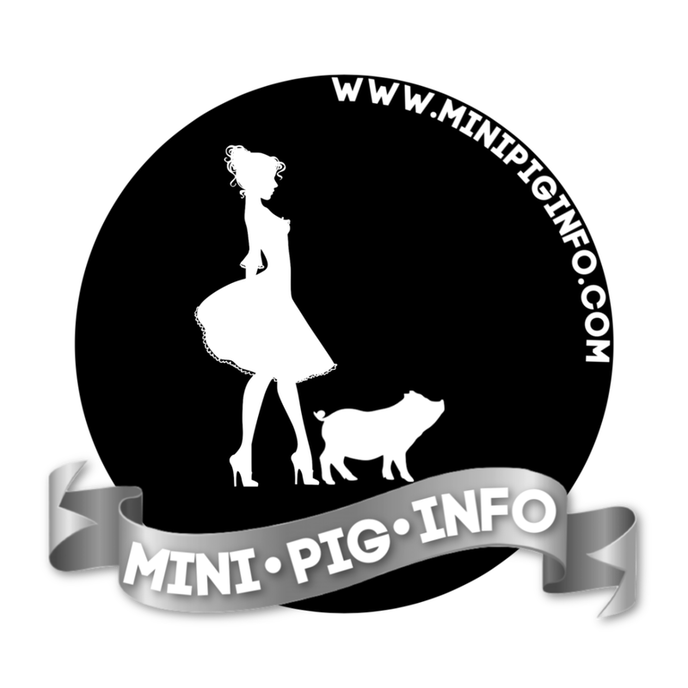
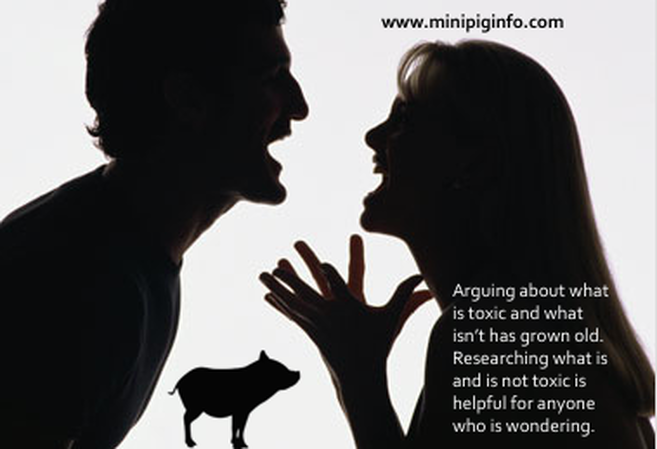
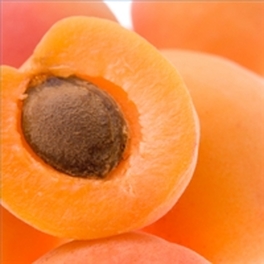
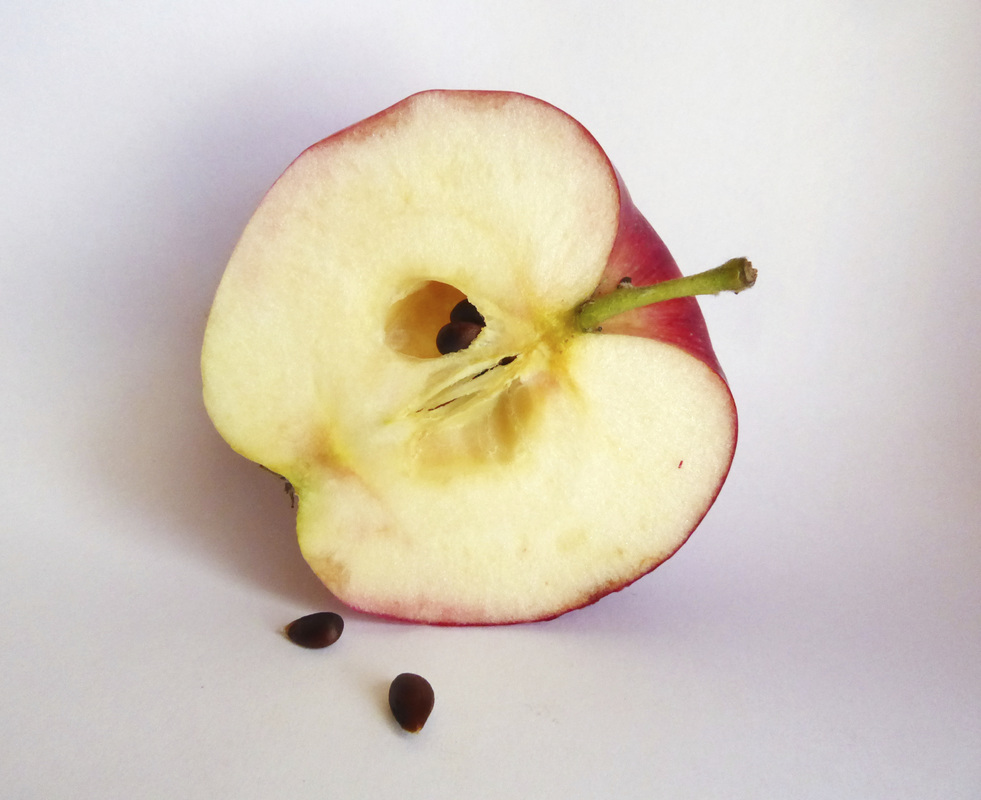
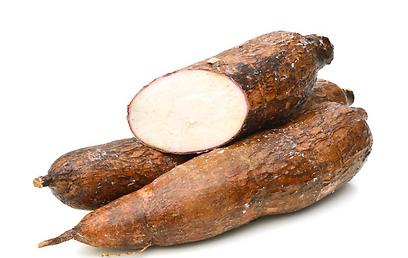
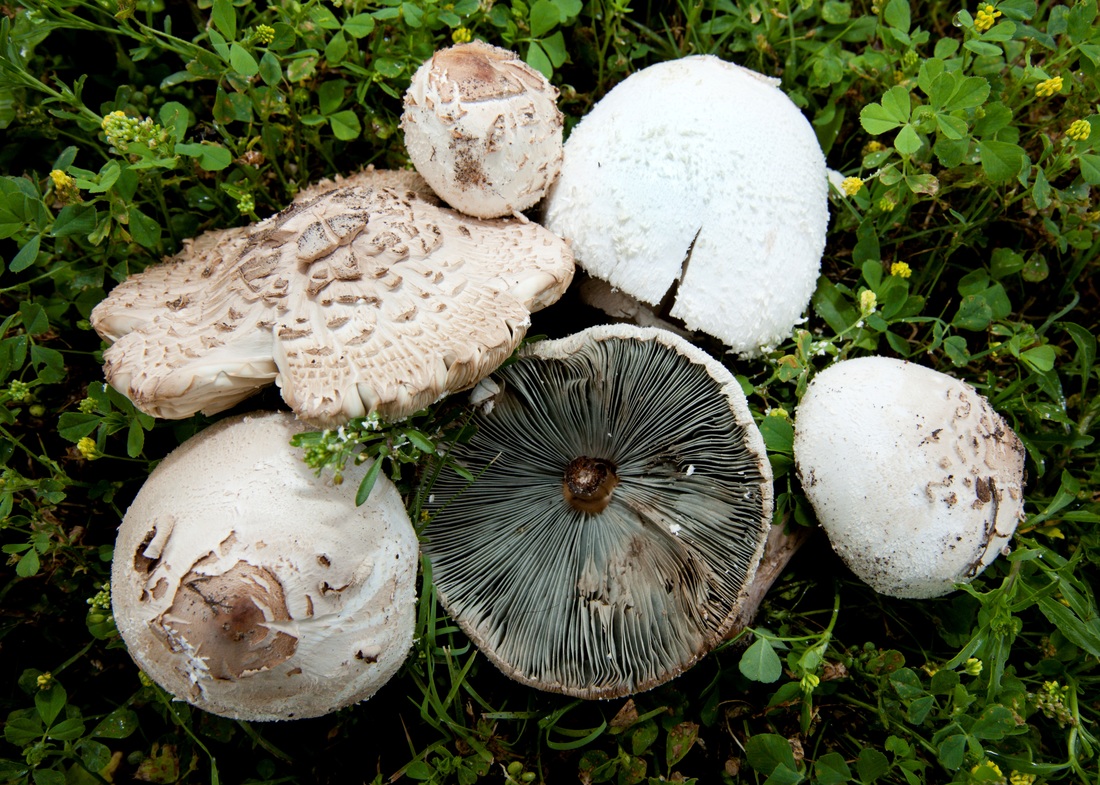
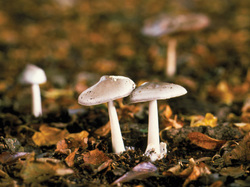
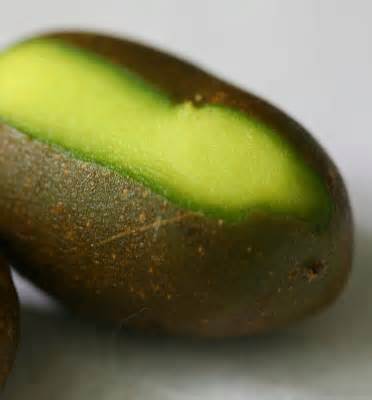
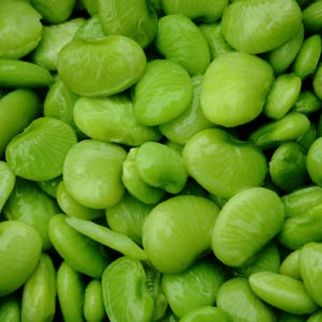
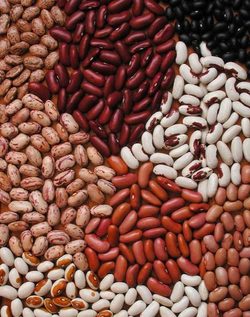
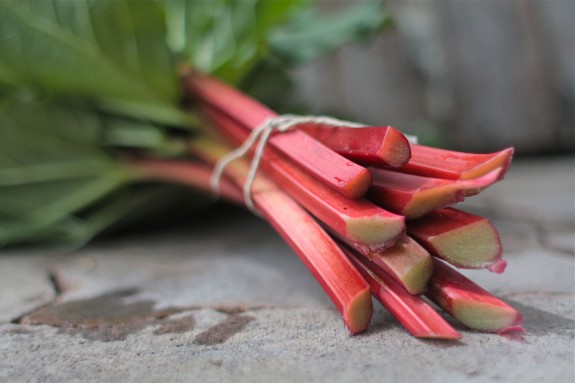
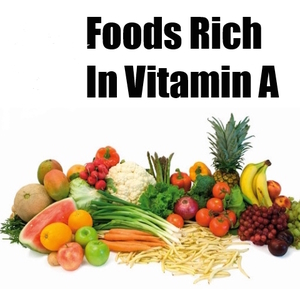
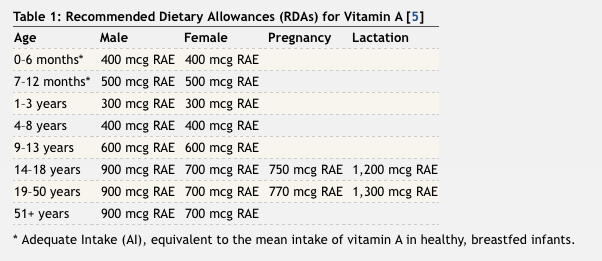
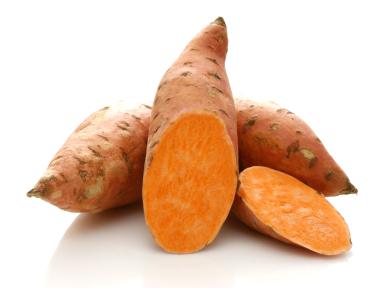
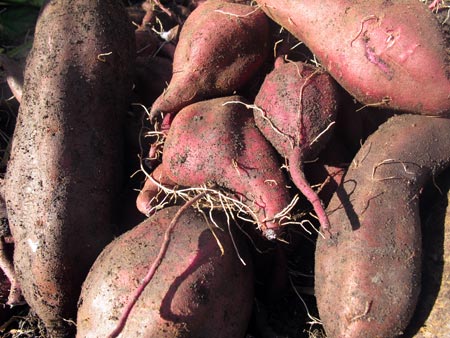
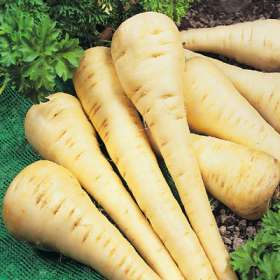
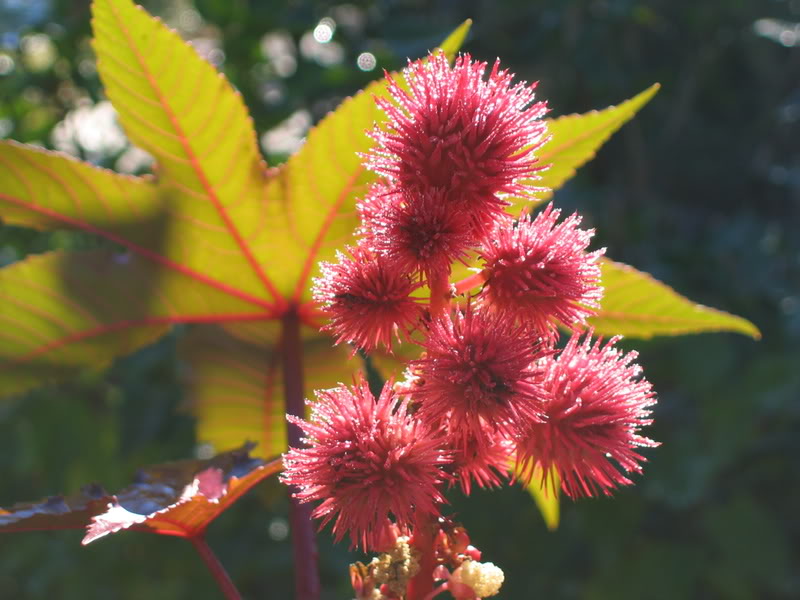
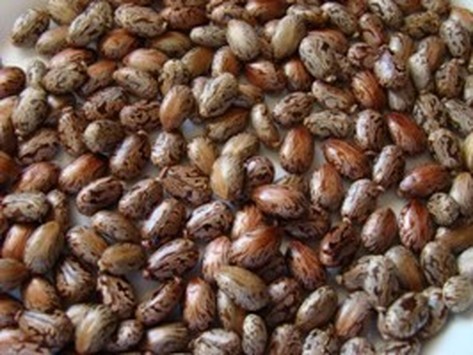
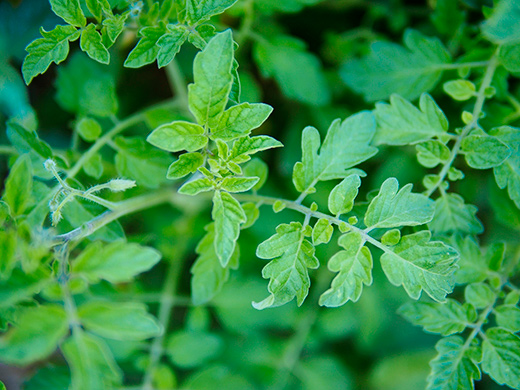
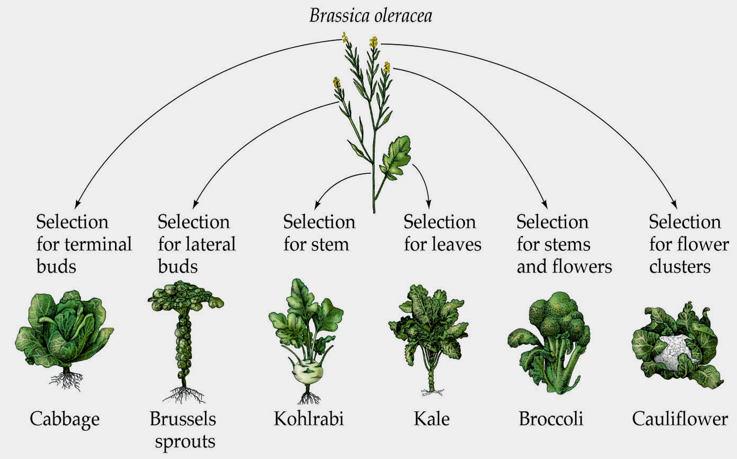
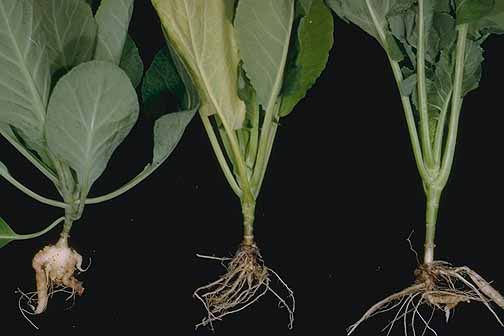
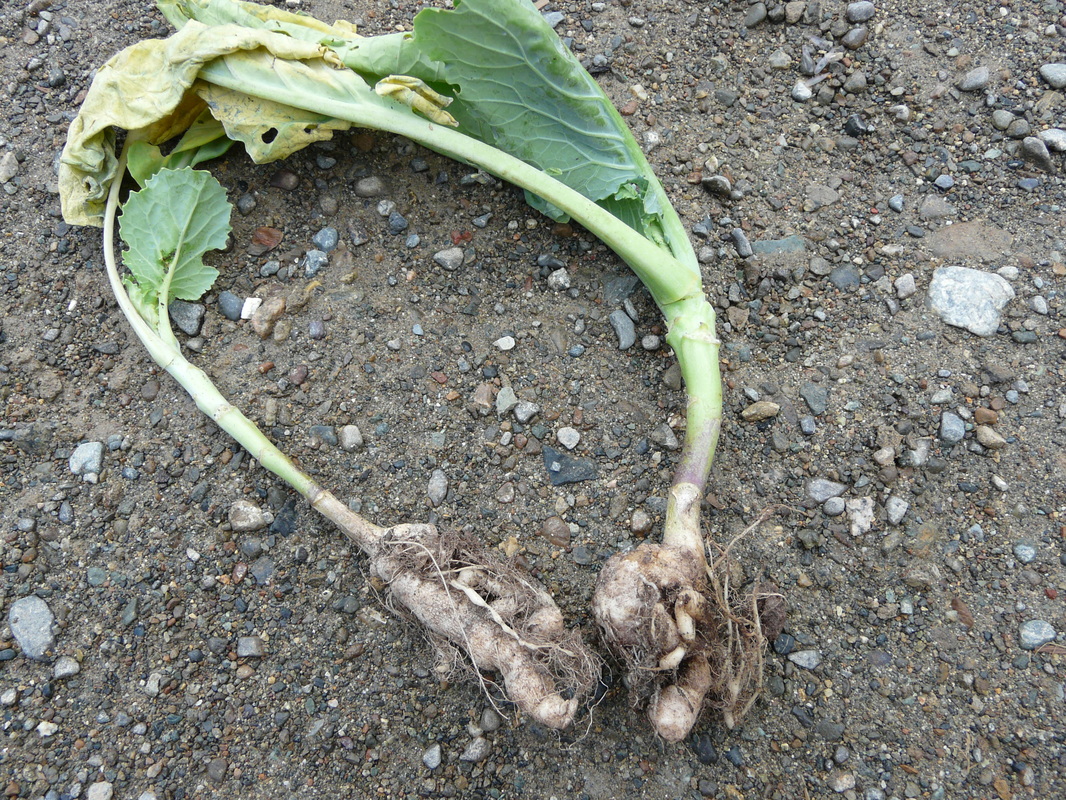
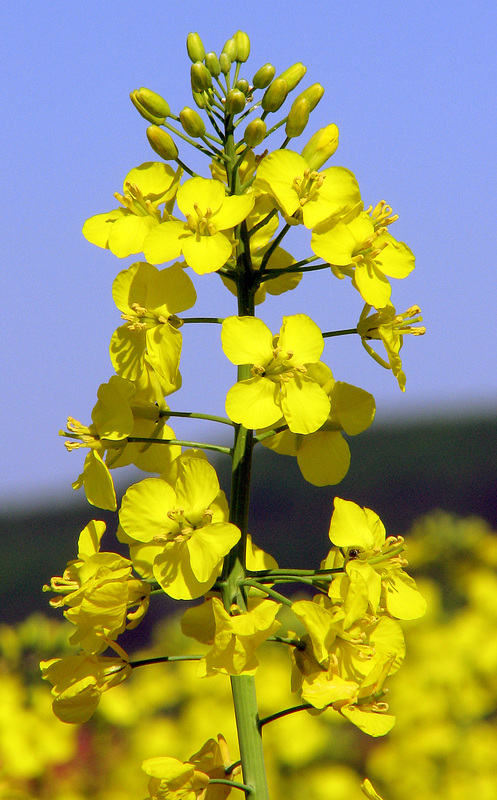
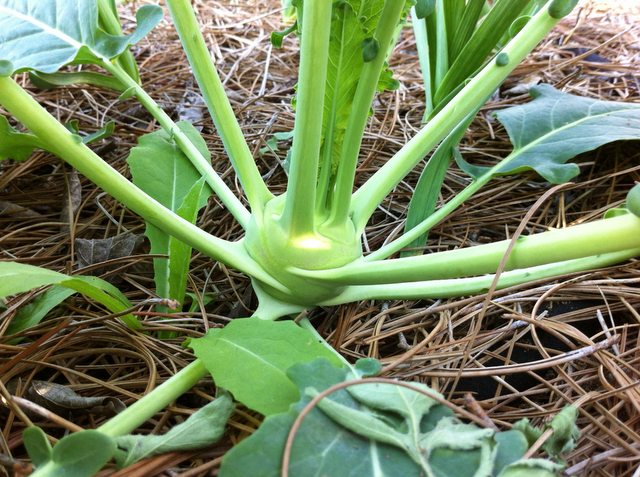
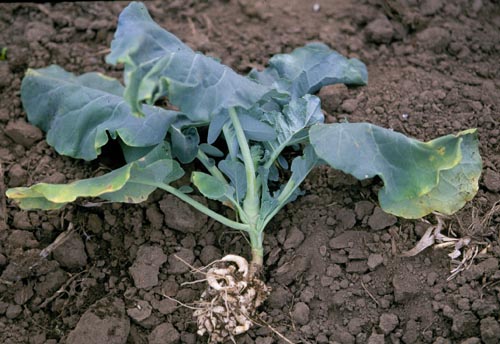
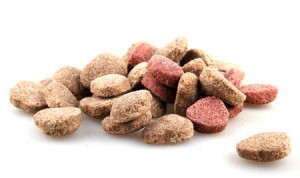
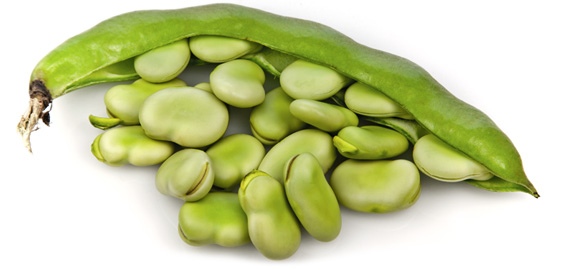
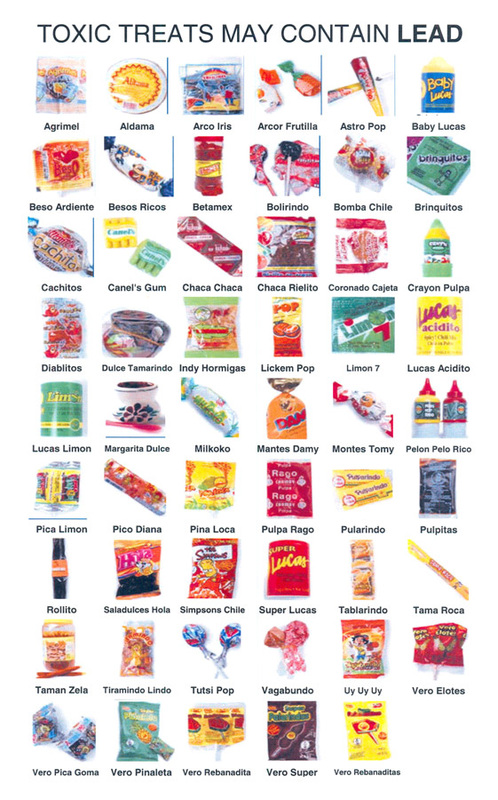
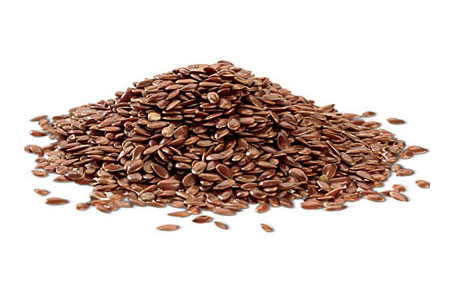
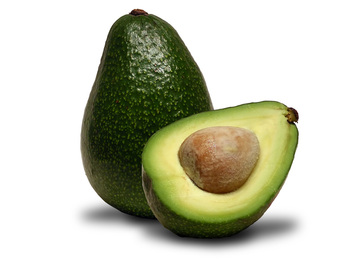
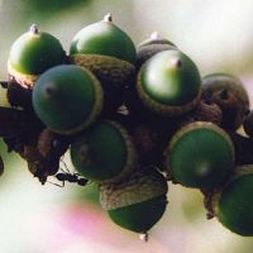
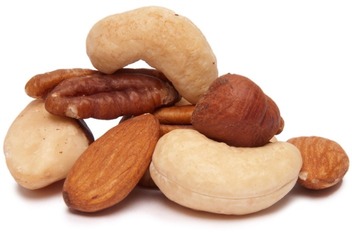
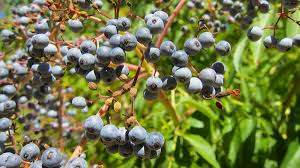
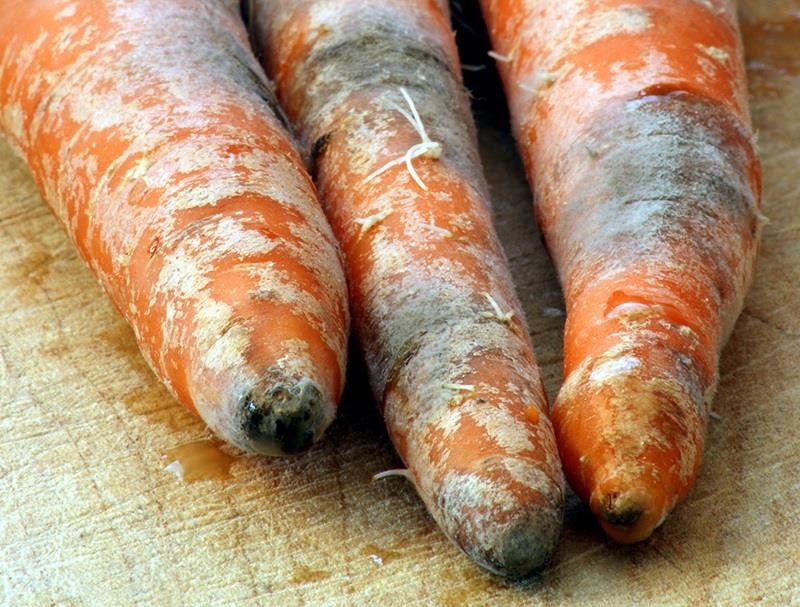
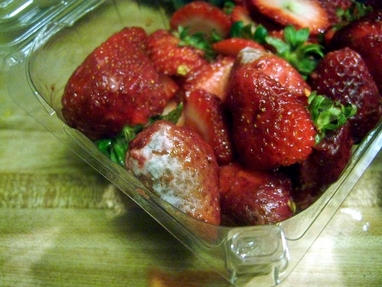
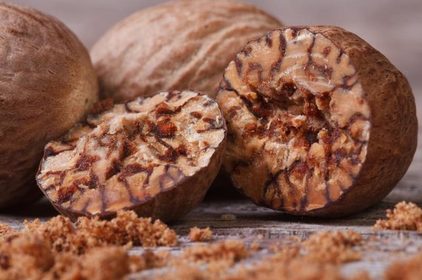
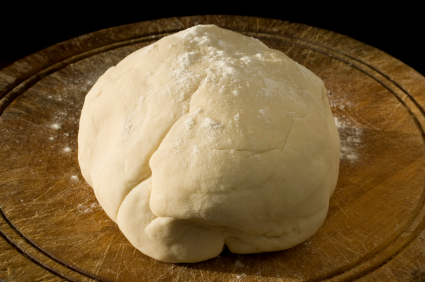
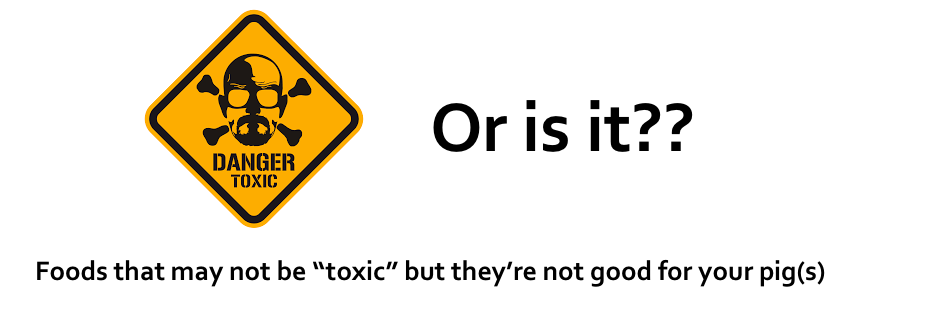


 RSS Feed
RSS Feed